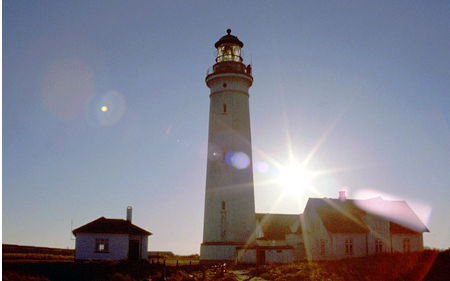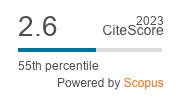The use of 'ecological risk' for assessing effects of human activities: An example including eutrophication and offshore wind farm construction in the north sea
DOI:
https://doi.org/10.3097/LO.200805Keywords:
Ecological indicators, Ecosystem integrity, Ecosystem services, Marine ecosystemAbstract
This paper takes the move from the uncertainty surrounding ecosystem thresholds and addresses the issue of ecosystem-state assessment by means of ecological integrity indicators and 'ecological risk'. The concept of 'ecological risk' gives a measure of the likelihood of ecosystem failure to provide the level of natural ecological goods and services expected/desired by human societies. As a consequence of human pressures (use of resources and discharge into the environment), ecosystem thresholds can be breached thus resulting in major threats to human health, safety and well-being. In this study we apply the concept of 'ecological risk' to two case-studies in the German exclusive economic zone: eutrophication and construction of offshore wind farms. The effects of different future scenarios for single-uses upon ecosystem integrity are analysed as well as the effects of one combined scenario. We conclude that in the short term construction of offshore wind farms can influence some processes to a much larger degree than eutrophication, however, combined impacts deriving from eutrophication and offshore wind farm construction need a more detailed analysis. Due to non-linear ecosystem processes, effects of combined or multiple uses of marine resources in terms of 'ecological risk', cannot be extrapolated from single-use scenarios.
References
Alcamo, J. (2001). Scenarios as tools for international environmental assessments. Scenarios as Tools for International Environmental Assessments,
Aven, T. (2007). A unified framework for risk and vulnerability analysis covering both safety and security. Reliability Engineering and System Safety, 92(6), 745-754. doi:10.1016/j.ress.2006.03.008
Baretta, J. W., Ebenhöh, W., & Ruardij, P. (1995). The european regional seas ecosystem model, a complex marine ecosystem model. Netherlands Journal of Sea Research, 33(3-4), 233-246. doi:10.1016/0077-7579(95)90047-0
Barkmann, J. (2002). Modellierung Und Indikation Nachhaltiger Landschaftsentwicklung - Beitrgezu Den Grundlagen Angewandter Kosystemforschung,
Barkmann, J., Baumann, R., Meyer, U., Müller, F., & Windhorst, W. (2001). Ökologische integrität: Risikovorsorge im nachhaltigen landschaftsmanagement. GAIA, 10(2), 97-108.
Barkmann, J., & Windhorst, W. (2000). Hedging our bets: The utility of ecological integrity. Handbook of Ecosystem Theories and Management, , 497-517.
Beaumont, N. J., Austen, M. C., Atkins, J. P., Burdon, D., Degraer, S., Dentinho, T. P., . . . Zarzycki, T. (2007). Identification, definition and quantification of goods and services provided by marine biodiversity: Implications for the ecosystem approach. Marine Pollution Bulletin, 54(3), 253-265. doi:10.1016/j.marpolbul.2006.12.003
Breckling, B., & Potthast, T. (2004). Der ökologische schadensbegriff - eine einführung. Ökologische Schäden, Begriffliche, Methodologische Und Ethische Aspekte, 10, 1-15.
Burkhard, B. (2006). Nordsee 2055-zukunftsszenarien fr die kste. EcoSys Suppl.Bd, 46, 70-89.
Burkhard, B., & Müller, F. (2006). Von der norddeutschen kulturlandschaft zu den grenzen der ökumene -modellierung des wasser- und stoffhaushaltes auf verschiedenen skalen. GrenzWerte - Wissenschaftliche Abhandlungen Des 55, , 383-392.
De Groot, R. S. (1992). Functions of Nature,
De Jong, F. (2006). Marine eutrophication in perspective: On the relevance of ecology for environmental policy. Marine eutrophication in perspective: On the relevance of ecology for environmental policy (pp. 1-335) doi:10.1007/3-540-33648-6
Fischhoff, B. (2005). Acceptable Risk: A Conceptual Proposal,
Folke, C., Carpenter, S., Elmqvist, T., Gunderson, L., Holling, C. S., & Walker, B. (2002). Resilience and sustainable development: Building adaptive capacity in a world of transformations. Ambio, 31(5), 437-440. doi:10.1579/0044-7447-31.5.437
Haller, M. (1990). Risiko management und risiko-dialog. Risiko Management Und Risiko-Dialog, , 229-256.
Heath, M. R., Edwards, A. C., Pätsch, J., & Turrell, W. R. (2002). Modelling the behaviour of nutrient in the coastal waters of scotland. Fisheries Research Services Report 10/02,
Hickel, W., Mangelsdorf, P., & Berg, J. (1993). The human impact in the german bight: Eutrophication during three decades (1962-1991). Helgoländer Meeresuntersuchungen, 47(3), 243-263. doi:10.1007/BF02367167
Hughes, T. P., Bellwood, D. R., Folke, C., Steneck, R. S., & Wilson, J. (2005). New paradigms for supporting the resilience of marine ecosystems. Trends in Ecology and Evolution, 20(7), 380-386. doi:10.1016/j.tree.2005.03.022
Joint, I., & Pomroy, A. (1993). Phytoplankton biomass and production in the southern north sea. Marine Ecology Progress Series, 99(1-2), 169-182. doi:10.3354/meps099169
Kasperson, R. E., Renn, O., Slovic, P., Brown, H. S., Emel, J., Goble, R., . . . Ratick, S. (1988). The social amplification of risk: A conceptual framework. Risk Analysis, 8(2), 177-187. doi:10.1111/j.1539-6924.1988.tb01168.x
Kay, J. J. (1993). On the nature of ecological integrity: Some closing comments. Ecological Integrity and the Management of Ecosystems, , 201-212.
Köller, J., Köppel, J., & Peters, W. (2006). Offshore wind energy: Research on environmental impacts. Offshore wind energy: Research on environmental impacts (pp. 1-371) doi:10.1007/978-3-540-34677-7
Lenhart, H. -. (2001). Effects of river nutrient load reduction on the eutrophication of the north sea, simulated with the ecosystem model ERSEM. Senckenbergiana Maritima, 31(2), 299-311. doi:10.1007/BF03043038
Lenhart, H. -., & Pohlmann, T. (1997). The ICES-boxes approach in relation to results of a north sea circulation model. Tellus, Series A: Dynamic Meteorology and Oceanography, 49(1), 139-160. doi:10.3402/tellusa.v49i1.12217
Lenhart, H. J., Radach, G., & Ruardij, P. (1997). The effects of river input on the ecosystem dynamics in the continental coastal zone of the north sea using ERSEM. Journal of Sea Research, 38(3-4), 249-274. doi:10.1016/S1385-1101(97)00049-X
Moll, A., & Radach, G. (2003). Review of three-dimensional ecological modelling related to the north sea shelf system: Part 1. models and their results. Progress in Oceanography, 57(2), 175-217.
Müller, F. (2005). Indicating ecosystem and landscape organisation. Ecological Indicators, 5(4 SPEC. ISS.), 280-294. doi:10.1016/j.ecolind.2005.03.017
Müller, F., Hoffmann-Kroll, R., & Wiggering, H. (2000). Indicating ecosystem integrity - theoretical concepts and environmental requirements. Ecological Modelling, 130(1-3), 13-23. doi:10.1016/S0304-3800(00)00210-6
Nunneri, C. (2007). Linking ecological and socio-economic system analysis - a methodological approach based on ecological risk. Berichte Aus Dem Forsch.-Und Technologiezentrum Westküste Der Universität Kiel, 45, 181.
Nunneri, C., Windhorst, W., Kerry Turner, R., & Lenhart, H. (2007). Nutrient emission reduction scenarios in the north sea: An abatement cost and ecosystem integrity analysis. Ecological Indicators, 7(4), 776-792. doi:10.1016/j.ecolind.2006.09.002
Perrings, C., & Pearce, D. (1994). Threshold effects and incentives for the conservation of biodiversity. Environmental & Resource Economics, 4(1), 13-28. doi:10.1007/BF00691930
Potthast, T. (2004). Conceptual, epistemological, and ethical perspectives on "ecological damage" with regard to genetically modified organisms. Naturschutz Und Biologische Vielfalt, 1, 245-256.
Radach, G. (1998). Quantification of long-term changes in the german bight using an ecological development index. ICES Journal of Marine Science, 55(4), 587-599. doi:10.1006/jmsc.1998.0403
Radach, G., Berg, J., & Hagmeier, E. (1990). Long-term changes of the annual cycles of meteorological, hydrographic, nutrient and phytoplankton time series at helgoland and at LV ELBE 1 in the german bight. Continental Shelf Research, 10(4), 305-328. doi:10.1016/0278-4343(90)90054-P
Scheffer, M., Carpenter, S., Foley, J. A., Folke, C., & Walker, B. (2001). Catastrophic shifts in ecosystems. Nature, 413(6856), 591-596. doi:10.1038/35098000
Slovic, P., Finucane, M. L., Peters, E., & MacGregor, D. G. (2004). Risk as analysis and risk as feelings: Some thoughts about affect, reason, risk, and rationality. Risk Analysis, 24(2), 311-322. doi:10.1111/j.0272-4332.2004.00433.x
Van Beusekom, J., & Diel-Christiansen, S. (1994). A synthesis of phyto- and zooplankton dynamics in the north sea environment. A Synthesis of Phyto- and Zooplankton Dynamics in the North Sea Environment,
van Notten, P. W. F., Rotmans, J., van Asselt, M. B. A., & Rothman, D. S. (2003). An updated scenario typology. Futures, 35(5), 423-443. doi:10.1016/S0016-3287(02)00090-3
Walker, B., Gunderson, L., Kinzig, A., Folke, C., Carpenter, S., & Schultz, L. (2006). A handful of heuristics and some propositions for understanding resilience in social-ecological systems. Ecology and Society, 11(1) doi:10.5751/ES-01530-110113
Windhorst, W., Colijn, F., Kabuta, S., Laane, R. P. W. M., & Lenhart, H. -. (2005). Defining a good ecological status of coastal waters-a case study for the elbe plume. Managing European Coasts: Past, Present and Future, , 59-73.

Downloads
Published
How to Cite
Issue
Section
License
Copyright (c) 2019 Corinna Nunneri, Hermann Josef Lenhart, Benjamin Burkhard, Franciscus Colijn, Felix Müller, Wilhelm Windhorst

This work is licensed under a Creative Commons Attribution 4.0 International License.










